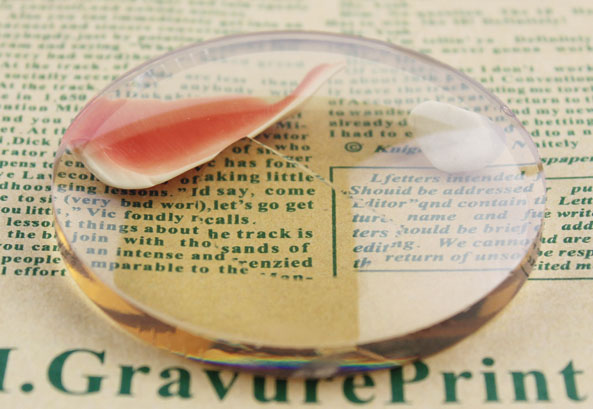When a person's eye adjustment is weakened due to age, he / she needs to correct his / her vision separately for the far and near vision. At this time, he / she often needs to wear two pairs of glasses separately, which is very inconvenient. Therefore, it is necessary to grind two different refractive powers on the same lens to become lenses in two areas. Such lenses are called bifocal lenses or bifocal glasses.
Type
Split type
It is the earliest and simplest type of binocular lens. Its inventor is generally recognized as American celebrity Franklin. Two lenses of different degrees are used for the separation type bifocal mirror, which are used as the far and near areas for central positioning. This basic principle is still used in all dual-mirror designs.
Gluing type
Glue the sub-film onto the main film. The original gum was Canadian cedar gum, which is easy to glue, and can also be glued after the rubber is degraded by mechanical, thermal and chemical effects. A kind of epoxy resin with better performance after ultraviolet treatment has gradually replaced the former. The glued bifocal mirror makes the design form and size of the sublayer more diverse, including the dyed sublayer and the prism control design. In order to make the boundary invisible and difficult to be detected, the sub-slice can be made into a circle, with the optical center and geometric center coincident. Waffle type bifocal mirror is a special glued bifocal mirror. The edge can be made very thin and difficult to distinguish when the sub-piece is processed on a temporary bearing body, thus improving the appearance.
Fusion type
It is to fuse the lens material with high refractive index into the concave area on the main plate at high temperature, and the refractive index of the main plate is low. Then run in the surface of the sub-piece to make the curvature of the sub-piece surface consistent with that of the main piece. There is no sense of demarcation. Reading additional A depends on the refractive power F1 of the front surface of the far field of vision, the curvature FC of the original concave arc and the fusion ratio. The fusion ratio is a functional relationship between the refractive index of two phase fusion lens materials, where n represents the refractive index of the main glass (usually the crown glass) and ns represents the refractive index of the sub-sheet (flint glass) with a large value, then the fusion ratio k=(n-1) / (n-n), so A=(F1-FC) / k. It can be seen from the above formula that in theory, changing the front surface curvature of the main plate, the concave arc curvature and the sub-plate refractive index can change the near additional degree, but in fact, it is generally achieved by changing the sub-plate refractive index. Table 8-2 shows the refractive index of sub-sheet flint glass commonly used in the world to manufacture different near-additional fusion bifocal mirrors.
Table 8-2 Refractive index of sub-plates of different near-additional fusion bifocal mirrors (flint glass)
Refractive index fusion ratio of additional degree sub-plate
+0.50~1.251.5888.0
+1.50~2.751.6544.0
+3.00~+4.001.7003.0

Using the fusion method, special shaped sub-chips can be made, such as flat top sub-chips, arc sub-chips, rainbow sub-chips, etc. If we use the third refractive index, we can make fused three-beam mirror.
Resin binoculars are integral binoculars manufactured by casting method. Fusion bifocal mirrors are made of glass materials. The glass integral bifocal mirror needs higher grinding technology.
E-type one line double light
This kind of dual-light mirror has a large proximity area. It is a kind of non-image hopping dual-light mirror, which can be made of glass or resin. In fact, E-type bifocal mirror can be considered as the negative degree of additional far-sight on the proximity mirror. The thickness of the upper half edge of the lens is relatively large, so the thickness of the upper and lower edges of the lens can be the same through the prism thinning method. The size of the vertical prism used depends on the near addition, which is yA/40, where y is the distance from the dividing line to the top of the sheet, and A is the reading addition. Since the near attachment of the two eyes is usually equal, the thinning amount of the binocular prism is also the same. After the prism is thinned, the refractive film shall be added or subtracted to eliminate the internal refraction.
Post time: Mar-09-2023

